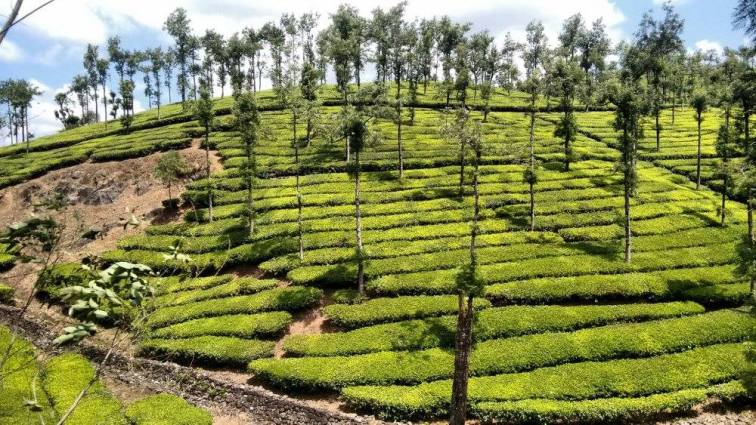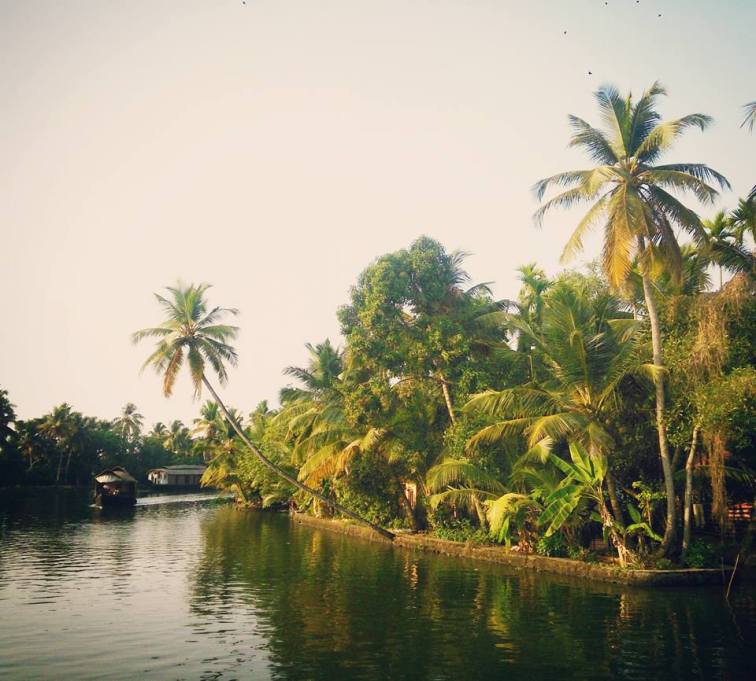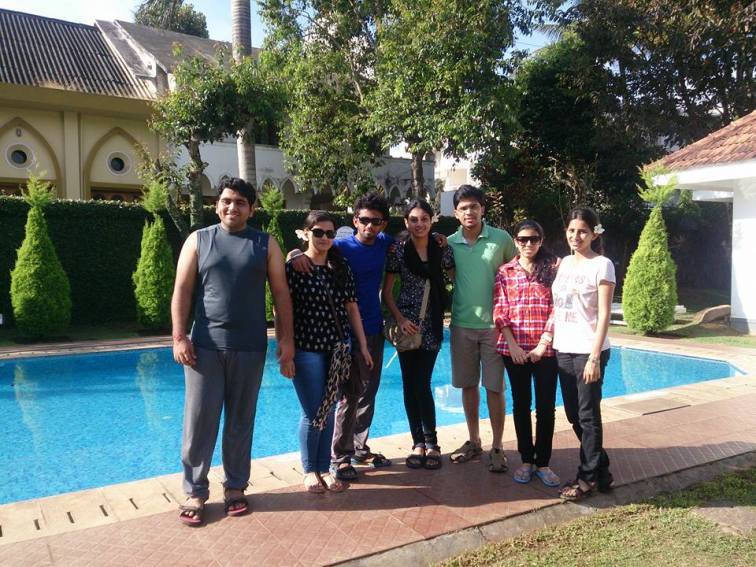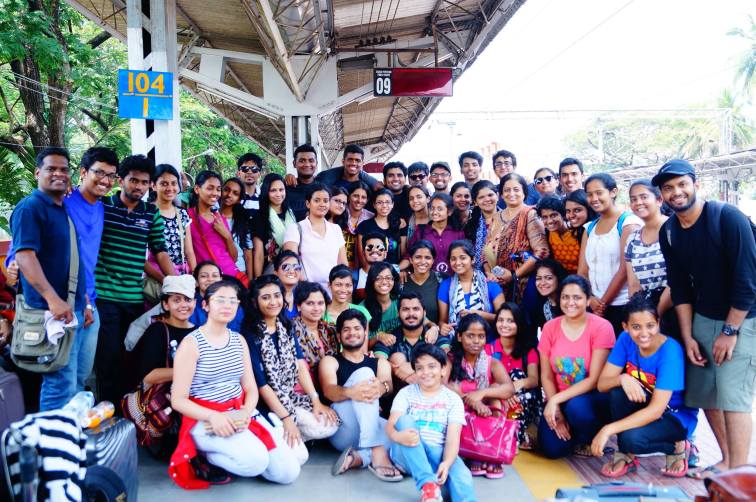With lowest positive population growth rate in India; 3.44%, highest Human Development Index (HDI); 0.790 in 2011, the highest literacy rate; 93.91% in the 2011 census, the highest life expectancy; 77 years and the highest sex ratio; 1,084 women per 1000 men, Kerala, popularly known as “God’s own country”, is no less than the most developed countries across the world. I happened to visit this mesmerising southern state of India this February for an Industrial visit, organised by The Economics Department of Ruia College. Be it calmness of Backwaters, spiciness of spice gardens, to green tea plantations, or extreme humidity in Alappuzha to extreme cold in Munnar, Kerala always provides its miscellaneous richness to those who seek it. And it didn’t disappoint a bunch of budding economists and political scientists either.
Each and every member of our trip had personal motives besides enjoying the scenic beauty of the southern state. I was no exception. I have always admired this state for its academic standards, individual development, strange at times but bold government policies, political climate and social development. Kerala is also one among the rarest mass of land in today’s India where left ideology is being liked by proportion of its population. The communist dominance was clearly evident in the streets of south Kerala where there were many CPI(M) flags and wall paintings alongside roads with attractive slogans. The development model of Kerala recently came into limelight in latest Lok Sabha elections of 2014 and was pitched against the Gujarat developmental model. Gujarat model, accused of dangling more towards capitalism and industrialisation, faced tremendous criticism on social standards and was constantly compared to the Kerala model, implied with inclusive growth.
It was this general election of 2014 which attracted me towards Kerala as a state for good governance, and it was this IV which gave me the opportunity to study the model closely. Though we had only 4 days to roam around mainstream Kerala (Tourist destinations), I tried my best to observe the state through the windowpanes of our bus and while visiting tourist destinations and interacting to locals.
Our first halt was at Alappuzha. We were supposed to visit the Alleppey beach (in front of our hotel) on the day of our visit and then to Old Krishna temple followed by backwaters the next day. We witnessed couple of policemen around 5 pm (high tide) near us just to make sure we are safe. Frankly, I don’t remember such an encounter with police when I visited the beaches of Alibaug(Maharashtra) and Condolim(Goa). At Shree Krishna Temple I was touched by the generosity of Mr. Bhaskara (retired Army Colonel), who was there to attend a close one’s wedding. Mr. Bhaskara made us comfortable and guided us through Kerala and its simplicity. Arrangements and facilities given by government at backwaters for tourists and local boat owners and operators were worth watching. We were quick to connect the backwaters to similar conditions found in mangroves of Navi Mumbai or Beaches at Konkan and Vasai. If “Touristically” exploiting resources is an art, then Kerala is a Pablo Picasso of it. Aleppey also gave us our first experience of ‘agitation’ and ‘education’ in this communist prone state where our bus accidentally went past the Aleppey Civil station which was facing a “routine” protest and the protesters along with the Local Sub-Inspector of Police helped our bus to find a new route but hesitated to leave their battlefield.
We left Alappuzha with fond memories. The journey to Thekkady was of 5 hours and we were soon transferred to rural Kerala through NH 220. However, the long journey gave us hindsight of the Kerala’s education model where we saw all types of educational institutes in towns’ from medical, engineering to arts. Police quarters for local officers were as big as bungalows if compared to the quarters their counterparts get in Mumbai. Keralites has cleverly achieved balance between technology and nature where we hear of digitization of work of local bodies along with short roads and excessive amount of maintained greenery.
Our journey to Munnar (last of the list) was pleasant. The discipline of tea plantation takes one out of his notion about indiscipline in India. It was our journey to Munnar which explained us the discipline of drivers in Kerala. Thanks to my friend, Pankaj, who is also a driving expert, for helping me out with this driving technique. We noticed that the vehicle coming down the hill stops at distance from the vehicle travelling up and allows it to pass. Government has also provided halt points for vehicles to stop. We certainly lack such driving qualities and facilities in Mumbai.
Kerala has a unique model of good governance and many local Keralites love calling it a self governed model. Credit must not only be given to the government but also to the work done by self help groups. The large number of self help groups and strong unity among people has made the policy makers to work hard and for the public. The citizens do not hesitate to throw out any party which seems unable to govern. The heroes of these successful efforts have been ‘old-fashioned’ public institutions-functioning schools, health centres, government offices, Gram Panchayats and cooperatives. These traditional public institutions have left much room for private initiatives at a later stage of development, but they have strongly laid the foundations of rapid progress in each of these cases.
Kerala’s social achievements have long history and have been widely discussed. What is interesting is that Kerala leads over other states, showing no signs of diminishing over time. Improvement of living conditions in Kerala has not only continued but has even accelerated, with help of rapid economic growth, which in turn has been assisted by Kerala’s focus on elementary education and other basic capabilities.
However, it is to be noted that Kerala didn’t achieve complete literacy out of blue moon. Kerala, to my surprise, did have a history of Pre-Independence Pro-education policy- much more so than the rest of India. This pro education outlook was intensified after Independence, under a left wing political leadership, placing Kerala substantially ahead of other states of India in school education. A small part of new Kerala, Malabar, had a more backward educational history, soon caught up with rest of Kerala in educational development and rapid expansion of schooling is considered as the important reason for it.
Not so long ago Kerala was considered as anomaly of sorts among Indian States. Its distinct social history and political culture appeared to set it apart, and to make it difficult for any other state to follow similar route. Today, the situation looks a little different. Kerala is still ahead in many ways, but some other states have also made great strides in improving the quality of life- not in exactly the same way but in ways that share many interesting features with Kerala’s own experience. Other states have good experience to learn from these positive experiences, even as India also learns from the successes and failures in the rest of the world.
I will like to thank Aditi Abhyankar ma’am and Pooja Ma’am for taking us to such a wonderful trip. And all my TYBA friends for making this trip memorable.
Lastly I will thank my group for all the fun we had. Thank you Pankaj, Soham, Ojaswi, Ankita, Mudita and Prachi.
P.S. – Criticism and negative side of Kerala Model of Governance is purposely avoided.
Tea plantations in Munnar @P.C.- Vinayak Pawar

Backwaters in Alappuzha (aleppey) @P.C. Prachi Shah

My Family. From left- Pankaj Ghuge(brother from another mother), Prachi Shah(Nani), Raj Kamble, Ankita Deole(Amma), Soham Patil(Lil Bro), Ojaswi Rao(Youngest Sister) and Mudita Joshi(Maushi). @P.C. Aditya Kadam.

Ruia ka Public!

Your articles are a must read, which not only cover the fundamentals but the minute things too. Herein, you not only vividly described your visit, but very beautifully described Kerala “God’s Own Country” governance pattern, its demographic conditions, and socio-political life. Cheers! Many more such articles awaited.
LikeLike
Glad that you liked it Shekhar. Some more interesting articles are coming too!
Thanks!
LikeLike